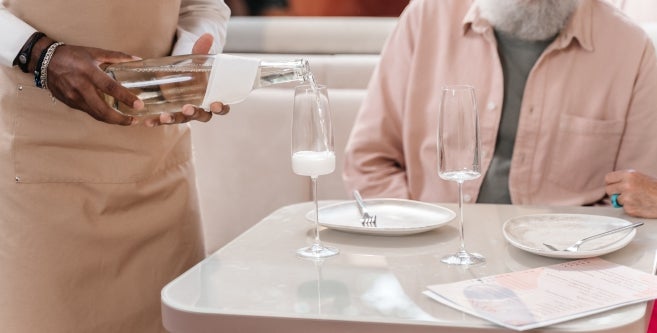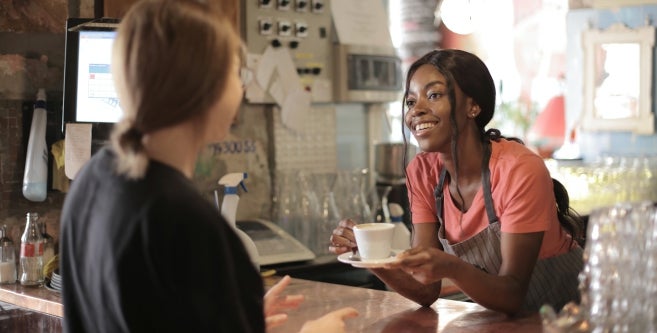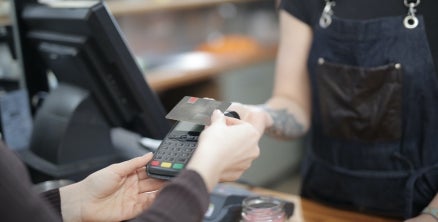If you’ve ever visited a restaurant, had food delivered to your home, or even just received a personal service that brought heightened convenience to your day, chances are you’ve given someone a tip.
This polite custom has been the norm across large swathes of the world for centuries. Whether it’s to congratulate a job well done, as part of a self-perceived obligation on the part of a customer, or even to help a working professional who might need the extra top-up, we all tip for different reasons.
But what does the current tipping landscape look like in America in 2023? Few 3-year periods have been as turbulent as those that the entire globe has just experienced. A global pandemic, a cost of living crisis, and the Russia-Ukraine war that saw gas prices shoot up have all changed the relationship we have with money. Has this impacted the service charge we’re willing to part with after a meal?
In this guide, we’re going to explore 40 telling statistics that reveal the current state of tipping in the U.S., as well as a brief history of, and advice for, the practice.
 Image Credit: Yan Krukau via Pexels
Image Credit: Yan Krukau via Pexels
40+ Statistics About American Tipping Trends in 2024
Tipping in the U.S. Is Down in 2023 From the 2 Years Prior
Perhaps to no great shock, given those aforementioned global economic events, tipping culture has seen a marginal decline in 2023 when compared to the years prior, according to 1 report. As personal budgets constrict, it’s only natural that these discretionary, supplementary additions to a bill are the first areas to feel a knock-on effect.
Two-Thirds of Americans Think Negatively of the Practice
This downturn in tipping rates might be explained by the increasingly common perception of tipping as a negative aspect of the dining and shopping experience. As many as 66% of those recently surveyed said that tipping is beginning to leave a negative taste in their mouths. This is understandable at a time when many people are struggling to make ends meet.
Source: thehill.com41% of People Think Companies Should Do More
A huge grievance also comes from larger companies not doing their part to help their workers. 41% of those surveyed said it’s the businesses that need to do more to ensure that people working in lower-paid positions are earning enough to comfortably live off of. It’s this backlash from customers that has inadvertently meant tips are down across the board for the people who need them most.
Source: thehill.comSit-Down Restaurants Have Seen the Biggest Decline in Tipping
The greatest fall comes in an area where tipping is often an expectation rather than a luxury — servers at sit-down restaurants. Figures suggest a drop from 75% (2021) and 73% (2022) to just 65% of patrons tipping their waiters in 2023. It’s these kinds of roles that often see workers paid lower rates, so the downturn in tipping rates could have a significant impact heading forward when it comes to staff turnover.
The Tip Percentage Has Increased Drastically Over the Years
In more encouraging news for those in the service industry, the amount they receive when they do get a tip has gone up drastically. While once at a fairly modest 10%, the average tip in the U.S. came in at around 21% of the bill in 2023. That jump goes a long way towards cushioning the slide experienced by the amount of people tipping.
Food Delivery Drivers Tend To Get the Biggest Tip
Those who were lucky enough to receive the largest average tip for their services were food delivery drivers. The people who took the time to hand-deliver orders received as much as 30% on average when interacting with customers. There’s some psychological sense to this, with people willing to offer more to someone who’s gone out of their way to make their day easier.
Source: www.cnbc.com Image Credit: cottonbro studio via Pexels
Image Credit: cottonbro studio via Pexels
The American Public Is Pushing Back on “Tip Creep”
As many as 17% of Americans are believed to be tipping less when asked to do so at checkout or when paying. This peaceful protest comes as 54% say they feel more pressured to tip when faced with the option on a tablet or iPad. “Tipflation” may begin to level out if this pushback continues on the part of the American public.
Only Germans Are More Likely To Tip Than Americans
Americans rightfully have a reputation as one of the most generous tippers in the world. But it might surprise some to learn that Germans are most likely to leave a tip when eating at a restaurant. YouGov found that 78% of Germans would tip in this instance, compared to 77% of Americans. Germans were also more generous regarding hairdressers, taxi drivers, hotel staff, baristas, and car mechanics.
5% of Americans Say They Never Tip Servers
While the number is small, it might shock some to learn that as many as 5% of Americans never tip their servers. The U.S. leads the way in this regard, with Sweden (27%), Italy (32%), and Denmark (33%) being the least likely to supplement the wages of service staff. This disparity may be a result of the base wages of these kinds of workers across nations.
Source: today.yougov.comOlder Americans Tend To Tip a Lot More
True to form, older generations tend to have more disposable income to hand out. As many as 96% of diners and 84% of those served in a bar or pub will tip if they are 65 or older. They’re also the most likely to give money to hotel staff, with as many as 64% saying they would hand over a cash tip for any help received during their stay.
Source: today.yougov.com Image Credit: Monet via Adobe Stock
Image Credit: Monet via Adobe Stock
18-to-29-Year-Olds Tip the Least
At the other end of the spectrum, those surveyed in the youngest bracket were found to give tips the least frequently. Just 49% of 18- to 29-year-olds said they would give a tip when eating at a restaurant.
Source: today.yougov.comRewarding Good Service Is Still the Main Motivation
Ultimately, a tip is something that is given for service rendered. As such, it’s probably not a huge surprise that good service is still the primary motivation for tipping. 56% of Americans said this was the driving factor for them. Despite representing over half of respondents, those from the U.S. actually ranked lowest in this category. Danish tippers were top, with 71% of people from the Scandinavian nation saying this was their primary reason for handing over extra money.
Source: today.yougov.comSome Tip Merely Out of Social Pressure
15% of Americans cited social pressure as the sole reason they give a tip. There’s a certain expectation around some social situations that might leave someone feeling obliged to tip — especially when eating out or getting a delivery service. This social pressure seems to peak in Sweden, where as many as 21% of people say this is their primary motivator for giving a tip.
Source: today.yougov.comSubsidizing Pay Also Factors Into Tipping Culture
A lot of Americans also seem to have a sense of duty to support service workers. A healthy 24% of those asked said that they tip to help staff who aren’t being paid as much as they should be. This represented the highest response in the category for any country, with Italy and France coming in at a close second, with 23%.
Source: today.yougov.comAmericans Will Often Ignore Poor Service To Tip
Such is the expectation to tip in U.S. culture that a large chunk of Americans will go as far as to ignore bad service in order to tip. At least 30% of those quizzed said they would be more than likely to give a tip, even if they were unhappy with the service provided. 32% said they would never tip in these circumstances. By contrast, exceptional service would result in a tip 99% of the time.
Source: today.yougov.comTakeout and Coffee Shops Don’t Get the Same Kind of Tipping Treatment
While tipping rates are high for dine-in restaurants and delivery services, the same cannot be said of coffee shops and takeout where you have to collect the food yourself. Only 31% of people think it’s necessary to tip someone in a coffee shop, while even less (21%) would give a tip when traveling to pick up food they’ve ordered.
Source: today.yougov.com Image Credit: Andrea Piacquadio via Pexels
Image Credit: Andrea Piacquadio via Pexels
Rideshare Drivers Are a Lot More Lucky
One survey found that 72.7% of Americans would tip their driver in addition to the cost of the ride. The amount given varies depending on the cost of the ride, with some adding a percentage of the overall price, and others just rounding up their payment to the nearest ten.
Housekeepers' Tips Suffer From Non-Interactions With Guests
While a lot of professions that offer an intricate service tend to do well when it comes to their tips, housekeepers at hotels are not so lucky. Just 41.4% of guests say that they leave anything behind for the people who tidy up their rooms. This is largely owing to the disconnect between these members of staff and their customers. It’s rare that you cross paths with a housekeeper as a hotel guest, leaving most feeling less obliged to offer them a tip.
Source: upgradedpoints.comMany Americans Feel They Are Asked To Tip Too Often
While not the majority, 36% of Americans think that the frequency with which they are asked to provide a tip exceeds an appropriate amount. A similar number (41%) thinks they get asked to tip the right amount. Those aged 45 to 64 are the least happy with tipping culture, with 42% of this bracket feeling tips are asked for too much and just 32% thinking they have to tip the right amount.
Source: today.yougov.com12% Still Think That People Aren’t Tipping Enough
Surprisingly, as many as 12% of Americans feel they aren’t being asked to tip enough. More understandably, it’s those who’ve held a job in the past that involved tips who feel that we need to tip more. As many as 19% of those who fell into the category had this belief, while just 8% of those who’ve never worked tipping jobs felt the same way.
Source: today.yougov.comOver a Quarter of Americans Give a 20% Tip or More
When it came to how much the average American is willing to part with, the highest percentage (26%) said that they would give as much as 20% as a tip. The next closest amounts were 15% and 10% (the chosen tip amounts of 18% of respondents). 1% even went as far as to say they were willing to tip more than 25% as an average amount.
Source: today.yougov.com Image Credit: RDNE Stock project via Pexels
Image Credit: RDNE Stock project via Pexels
Across Most Other Nations, Tipping Rarely Rises Above 10%
The U.S. stood out as an anomaly when it came to its top tipping percentage, with Denmark the next most likely to tip at 20%, with just 3% of respondents saying they would. In fact, while as many as 59% of Americans were happy to tip over 10%, the next closest nation in this regard was again Denmark, where just 16% of Danes were willing to part with more than 10% of the total bill.
Source: today.yougov.com7% Will Tip More Than 25%
Other figures suggest that as many as 7% of people are willing to part with an additional quarter of the bill in the U.S. That’s more than double the amount of people who were willing to tip less than 5%, which represented just 3% of the total respondents. A further 5% said they were unwilling to reveal how much they tipped on average.
Personal Budget and Level of Complexity Also Factor In
Personal budget — as in, the amount an individual has to allocate to their dining or shopping experience — also has a huge say regarding what affects someone’s tip rate and size. 56% of people consider this when weighing how much they want to tip. Other hugely influential factors include the complexity of the service rendered (49%) and how long a person had to wait for what they’d ordered (43%).
Source: www.forbes.com32% Tip More Than Before the Pandemic
An increased awareness regarding working conditions and practicalities, coupled with rising base rates for food and services, has resulted in a large proportion of people tipping more since the conclusion of the pandemic than before it. 32% of respondents said they now give more when it’s time to tip, while 37% said they gave about the same amount.
Source: www.forbes.com Image Credit: SFIO CRACHO via Adobe Stock
Image Credit: SFIO CRACHO via Adobe Stock
Equally, 32% Tip Less Than Before 2021 Inflation
Interestingly, the same percentage of people said that the impact of economic inflation has also decreased the amount they were likely to tip. 27% said they’ve given more since this period, while 37% said their tipping habits hadn’t changed since 2021.
Source: www.forbes.comDigital Payments Are Much Higher Than Cash Tips
A staggering 73% of Americans tipped at least 11% more when paying for something digitally. Whether this was through the ease of clicking a button or just not having the physical cash to hand, this speaks volumes about the shift in tipping culture. As many as 14% of respondents said they could tip anywhere from 21% to 25% more due to using a digital service rather than cash.
Source: www.forbes.comNearly a Third of Americans Feel Pressured To Tip
When quizzed about their attitudes towards tipping, many Americans felt largely negative emotions. The most popular response given was that they felt pressured, with as many as 31% of those surveyed saying this. Other common answers were overwhelmed (26%), embarrassed (23%), guilty (23%), and confused (20%).
Source: www.forbes.comA Third Are Also Happy or Grateful To Tip
It’s not all doom and gloom. Many Americans also have positive feelings towards tipping, with a very healthy 36% saying that the practice actually made them feel happy. Other positive responses included grateful (33%), excited (29%), content (22%), and even calm (18%).
Source: www.forbes.comHome Services and Repairs Are Not Tipped Nearly Half the Time
Much like mechanics, those who work in home repairs can expect to be tipped far less frequently than service workers in other roles. As many as 48% of people in professions like cable installers, plumbers, and electricians will never receive a tip, with just 10% saying they will always tip tradespeople. The next least likely to get a tip were furniture appliance and delivery workers, to whom 38% of people said they would never give extra cash.
 Image Credit: Annie Gray via Unsplash
Image Credit: Annie Gray via Unsplash
“Minnesota Nice” Applies to Tipping Habits as Well
If you’ve ever heard the phrase “Minnesota nice,” you’ll know it applies to the friendly demeanor associated with those who live in the Midwest. This stereotype seems to exist for a reason, with those living in this part of the country being the most generous when it comes to a lot of tipping habits. They were found to give the most when at a restaurant (77% of respondents) as well as to hairdressers (61%) and food delivery drivers (57%).
Source: www.bankrate.comThose in the South and West Are Less Likely To Tip
Meanwhile, those living in the South and West were found to be stingiest regarding the amount they were willing to part with. They both were just 61% likely to give a tip after a meal at a restaurant, with those in the South only having a 37% chance of tipping for a taxi. Both also ranked lowly at the hairdressers, with Southerners tipping just 48% of the time and Westerners just 50%.
Source: www.bankrate.com1 in 3 Americans Think Tipping Is Out of Control
While there’s a lot of divide between locations and generations, one thing that does seem fairly consistent across the board is that nearly a third of all Americans think tipping culture has gotten a little out of hand. A notable exception is Gen Z (those born from 1997 to 2013), where just 22% of respondents feel like they’re being asked to tip too much.
Source: www.bankrate.comOlder Generations Feel Worse About Tipping
The older one gets, the less patience there appears to be for tipflation. 27% of millennials say that they feel it’s getting too much, while 33% of Gen X and baby boomers feel like tipping needs to be reigned in. If nothing else, it appears American hearts tend to toughen over time.
Source: www.bankrate.comThere’s Still Confusion Around Tipping
Despite the practice being a staple part of most dining experiences during everyone’s lifetime, as many as 15% of people say they don’t know how much to tip or when it is or isn’t appropriate. Changing standards have left many people unsure about where they stand or what’s expected of them when they head out for a meal or receive a service.
Source: www.bankrate.comMost People Enter Their Own Tipping Amount
In the age where it’s possible to manually enter your tip on a device, most people choose to do this rather than hand over a suggested tip amount. A Finder report discovered that 55% of people write in their own exact tip amount, while just 39% were led by the suggested tip. Putting the choice back in the hands of the tipper offers a sense of freedom, which could explain the higher tip amounts in the digital age.
Women Are More Generous Tippers Than Men
Finder’s survey also found that women were considerably better tippers than men. 55% of women said they gave a tip in every instance it was asked, while just 39% of men could say the same thing. 11% of men also said they rarely or never tipped, whereas 5% of women were in the same category.
Source: www.finder.com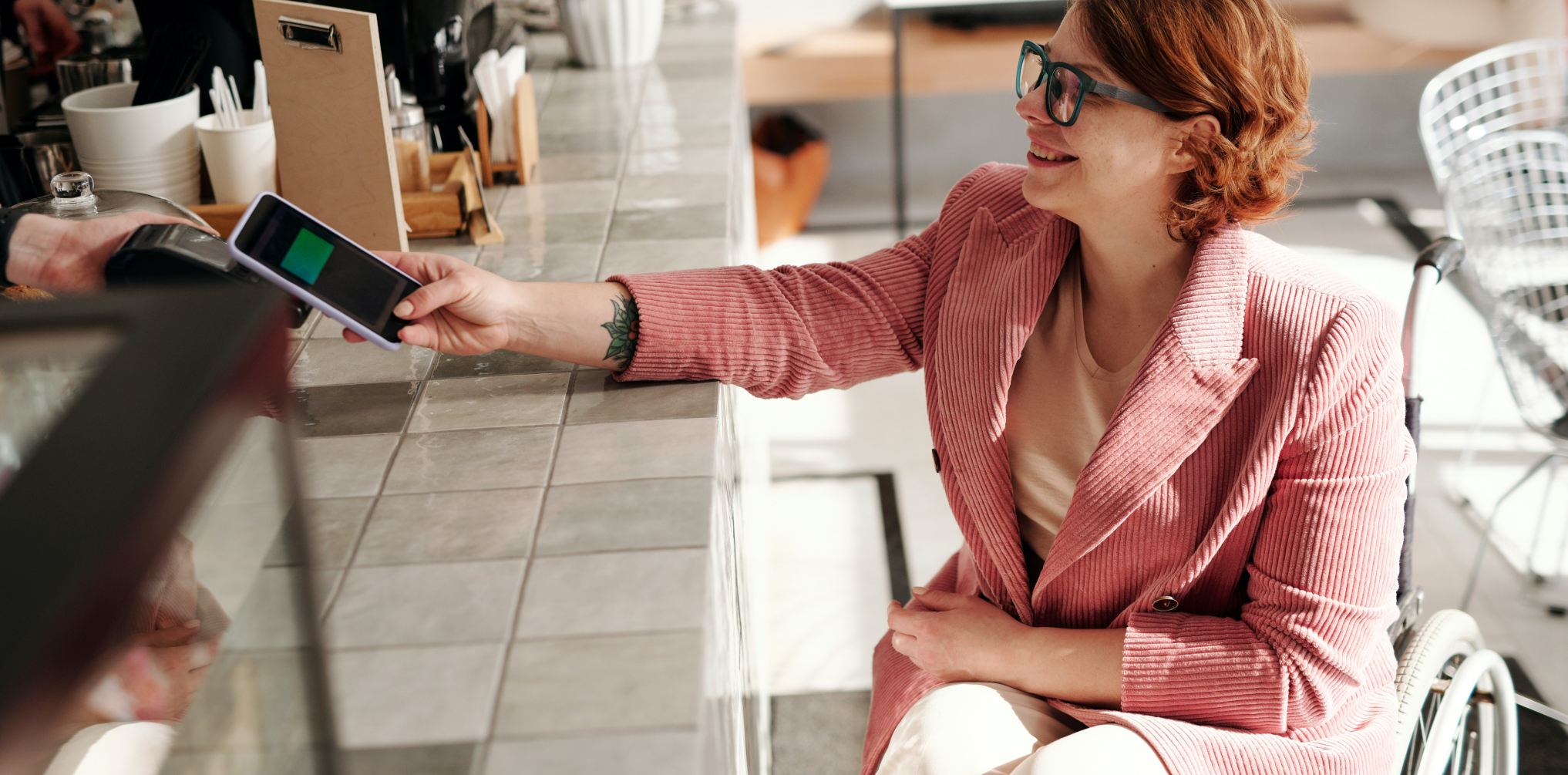 Image Credit: Marcus Aurelius via Pexels
Image Credit: Marcus Aurelius via Pexels
Men Feel More Obliged and Pressured To Tip
Despite tipping less, men tend to feel more obliged to leave a tip when met with a tablet device at a checkout kiosk. 34% of men said that being asked to tip this way put a lot of pressure on them, while just 25% of women felt the same way. Men (46%) are also more likely to stick to the suggested tip amount compared to women (32%).
Source: www.finder.comNew Hampshire Offers the Best Tipping Rates
When it came to where tipping rates are at their best, New Hampshire led the way among U.S. states. The average resident from this locale would offer as much as 20.47% when tipping, followed closely by Vermont (20.3%), Massachusetts (19.58%), New Jersey (19.44%), and Colorado (19.4%).
Idaho Has the Worst Tippers
At the other end of the spectrum, Idaho was found to be the state with the lowest tip percentage. The figure sat at just 16.71% on average, which was just ahead of Minnesota (17.21%), North Dakota (17.22%), Utah (17.25%), and South Dakota (17.29%). The numbers show that while Midwesterners tend to be more reliable tippers in terms of consistency, they’re less likely to give much.
Source: www.moneypenny.comAlcohol Plays a Role in Tipping Rates
As many as 1 in 4 Americans (25%) said they were more likely to leave a higher tip if they felt tipsy when the bill came. The feel-good feeling of having a drink or 2 clearly plays a large part in how generous a customer is with their server.
Millennials Tip Most When the Server Is Attractive
When a survey was carried out to find what exact scenario coupled with generation was most likely to garner a tip, it was found that offering a free item to Gen X would get the best results. Close behind in second and third positions were 2 millennial examples – the server flirting with them and the server being physically attractive.
Tipping Culture in the U.S.
Now that we’ve explored some mind-boggling tipping statistics, let’s take a closer look at the history of tipping in the U.S. – as well as provide some rough guidance on when and how to tip appropriately.
A Brief Timeline of Tipping in the U.S.
Tipping has a long and complex history, and it would take more time than we have to explore every nuance of the practice. Rather than that, let’s take a closer look at the key moments that shaped the tipping world as we know it today.
1850s
The wealthy American elite stumbled across the practice of tipping servers while traveling through Europe (where the practice was invented in the Middle Ages) as a reward for serfs who pleased their masters with excellent performance). Tipping is brought back to the U.S.
1865
The 13th Amendment is passed, abolishing slavery and leaving thousands of freed workers in low-paying positions. These formerly enslaved people primarily rely on tips to supplement their horrendous pay rates.
1900s
Many states pass laws that ban the practice of tipping. General attitudes towards tipping were mixed, with some feeling like it pressured a patron to pay twice for a service.
1926
The government repeals most anti-tipping laws. The practice of tipping had become too widespread before the bans to properly police, resulting in Congress rescinding its original laws for ease.
1938
The federal minimum wage is established for the first time. Tipped workers are omitted, meaning that those in this pay structure can still be paid at the discretion of their employers.
1942
The Supreme Court rules that if someone shares a tip with a server, the money is theirs to keep. They do not have to share any with the kitchen staff.
1966
Congress creates “tip credit.” This system allows businesses to pay employees below minimum wage as long as their gratuities carry them over the minimum wage threshold.
1996
The subminimum wage is frozen at $2.13 an hour. In 43 states in 2022, this still represents the minimum wage that a worker can be paid.
2018
The Department of Labor updates laws to include back-of-house staff in larger tip pools. Front-of-house staff still tend to keep the bulk of a tip, but a small percentage is put towards those working behind the scenes.
Source: 7shifts
How Much Should You Tip?
It’s always tricky to know exactly what percentage of your bill you should include as a tip. In reality, the amount you give is totally up to you. But, if you want to follow the best practice guidelines, there are factors to keep in mind:
How personalized is the service?
If someone has provided a service which you feel went above and beyond to benefit you, giving them a generous tip in exchange for this makes sense. This doesn’t have to be a percentage amount — it could just be a large round figure.
Consider giving a cash tip
Cash tips are a good way to take the stress of considering “How much is right?” off your plate. Cash provides a rounded figure that can be quickly handed over as a tip.
Try to weigh-up the effort-to-tip ratio
While this might be hard to calculate in the moment, try to think about how much the person you’re tipping actually did to accommodate you. If someone just brought a cup of coffee to your table, they might not require a 20% tip.
While it’s totally at your discretion, some rough figures for how much you might want to tip in certain scenarios would be as follows:
15% to 20%
Restaurants
15% to 20%
A hairdresser or spa
10% to 15%
Delivery
10% to 15%
Taxi drivers
10% to 15%
Pet care providers
$2 a cocktail
Bartenders
$5 to $10
A valet
$5 a day
Hotel housekeeping
Source: Yahoo
When Should You Tip?
Sometimes it’s not a question of how much you should tip, but rather whether you should give anything at all. A general rule of thumb is to tip people who might rely on that money for their income. Some common examples of jobs like this include:
Babysitters
Baggage porters
Bartenders
Caddies
Cleaners
Delivery drivers
Dining room attendants
Taxi drivers
Valets
Waiting staff
But that doesn’t mean you have to exclusively tip these workers alone. If anyone provides a personal service that you’re grateful for, you are free to give them additional cash as a way of saying thank you. It’s completely at your discretion.
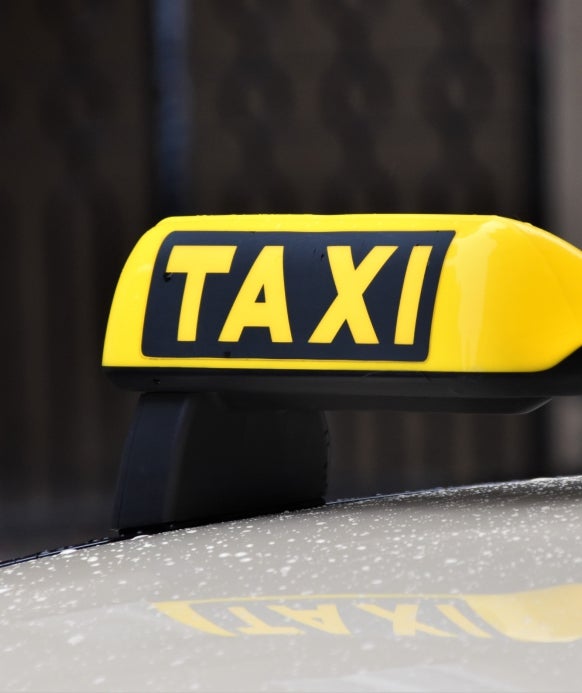 Image Credit: Waldemar via Unsplash
Image Credit: Waldemar via Unsplash
A general rule of thumb is to tip people who might rely on that money for their income.
Secondary Reading
Has the way you view tipping changed in recent times? Explore more about the fascinating culture of tipping by checking out some of these handy additional sources:


